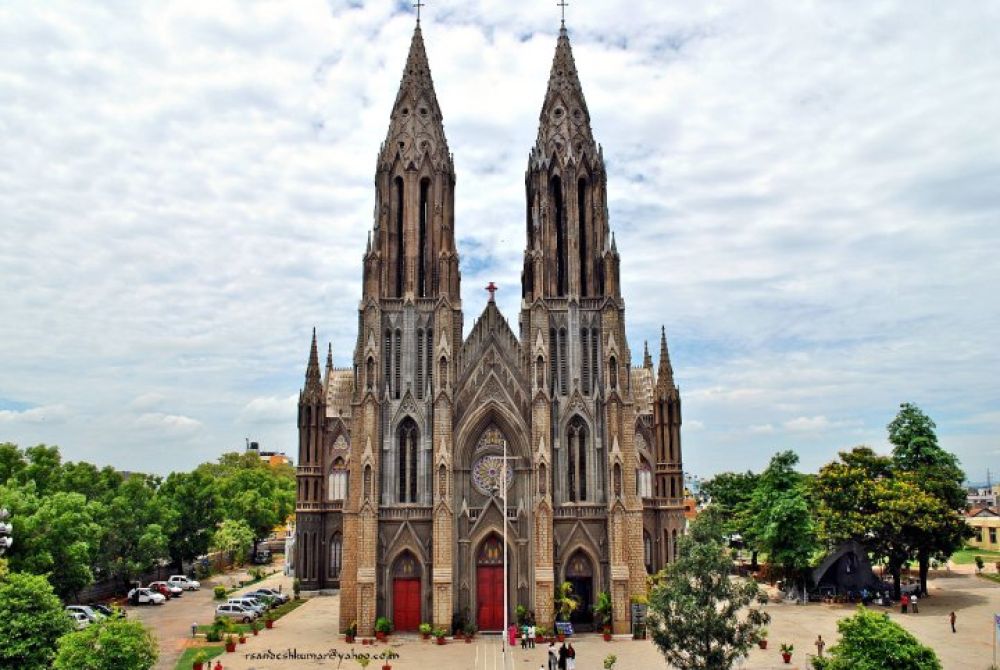

St. Philomena's Cathedral in Mysore (now officially named Mysuru) is one of the most important religious landmarks in the city and an epitome of historical architecture in India. This grand cathedral was built in 1936 with inspiration drawn from the Cologne Cathedral in Germany, symbolizing a blend of Gothic-style and European influences in Indian ecclesiastical architecture. It stands as a testament to the colonial past of India and bears witness to the religious plurality and cultural heritage that Mysore is known for.
The inception of the cathedral dates back to the earlier 19th century with a small church constructed at the same location. Later, His Highness Krishnaraja Wodeyar IV laid the foundation for the current structure in 1933 to accommodate the growing Christian population in the region. The then king of Mysore showed keen interest in the diverse architectural types and encouraged the construction of the cathedral.
Designed by French architect Daly, the cathedral is dedicated to Saint Philomena, a Latin Catholic martyr, considered a symbol of the Catholic faithful and virginal strength. The church houses a relic of Saint Philomena that was brought from Peter's Treasury to Mysore at the behest of the then vicar general.
Tourism at St. Philomena's Cathedral
Over the years, St. Philomena's Cathedral has attracted tourists and worshippers alike. Its towering spires can be seen from a distance, drawing the eyes of those visiting Mysore. The cathedral not only serves as a place of worship but also as an architectural marvel for history buffs, architecture enthusiasts, and tourists interested in the cultural narratives of places.
Visitors are captivated by the stained glass windows depicting scenes from the Bible, beautifully illuminated under the sunlight, and the intricate frescoes that adorn the walls of the cathedral. The crypt houses a statue of Saint Philomena and a collection of ancient inscriptions.
Latest Tourism Trends Related to St. Philomena's Cathedral
In recent years, the cathedral has seen an increase in tourism, becoming part of the city's comprehensive heritage tours. The tourism sector has recognized the cathedral's potential beyond spiritual borders and has included it in the must-visit list for Mysore's tourists. There has also been a rise in interest for guided tours that elucidate the cathedral's history, art, and architecture.
With the government's push towards digital engagement and the popularity of travel apps, virtual walkthroughs have become increasingly common for international tourists unable to visit in-person. Moreover, eco-tourism initiatives in Mysore have encouraged visitors to combine their cathedral visit with trips to nearby natural and wildlife sanctuaries, promoting a holistic travel experience.
The festival season sees a surge in visitor numbers, especially during Christmas, when the cathedral is magnificently lit up and plays host to several festive activities. Concerts and special masses during this time make it a focal point for both tourists and locals to engage with the city's culture.
St. Philomena's Cathedral remains an important landmark in Mysore's tourism history, bridging the past with the present and leaving an indelible mark on the city's multi-faceted tourist attractions.